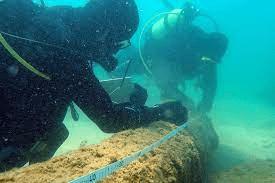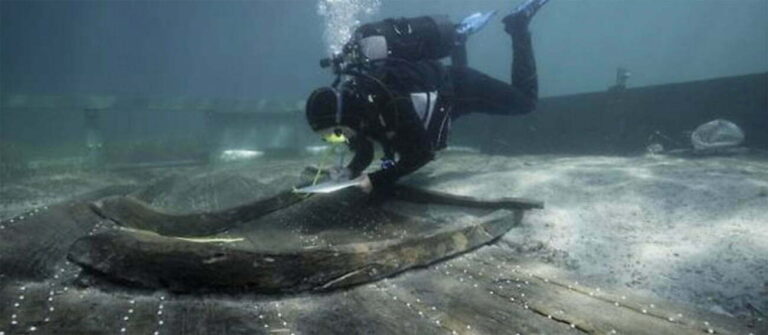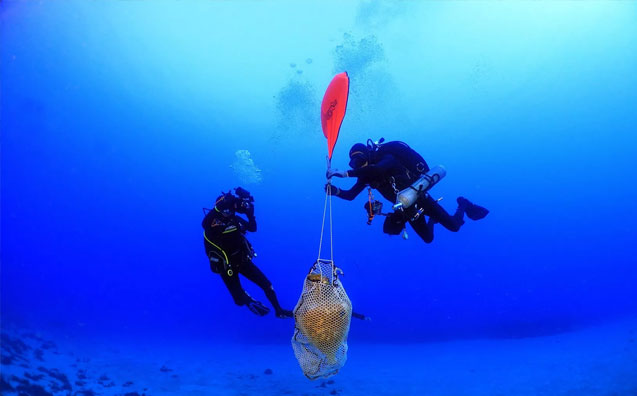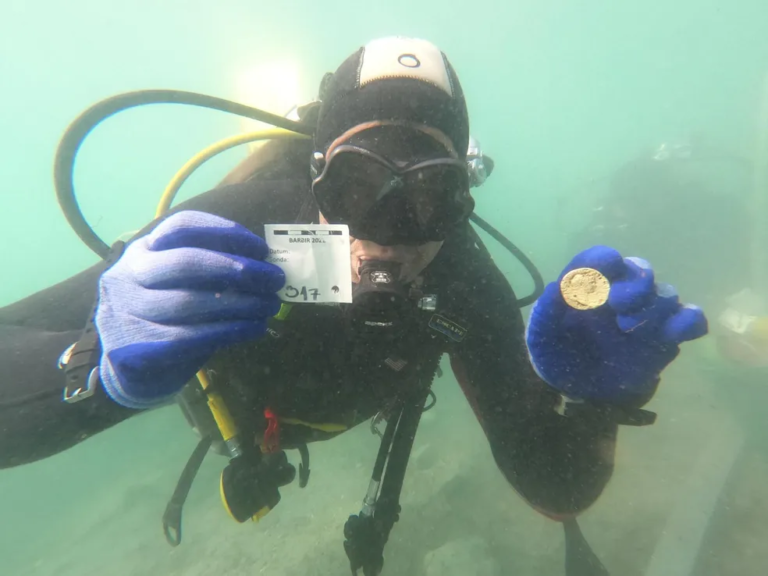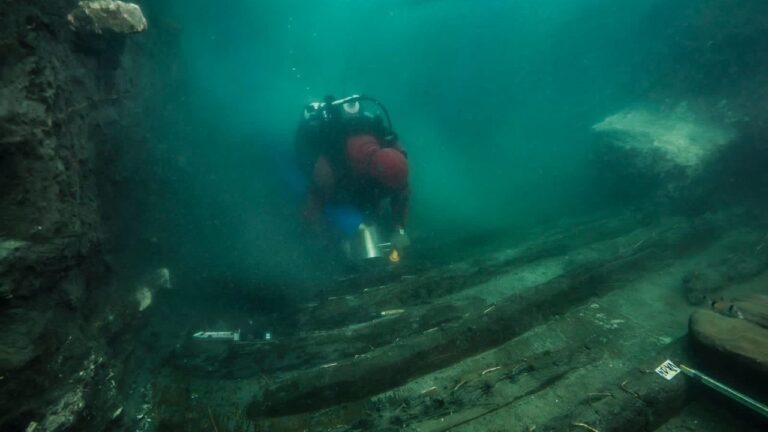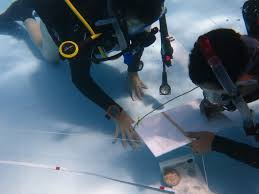Underwater Imaging Technology: Capturing the Underworld
Underwater imaging technology is a revolutionary field that has significantly impacted the exploration and understanding of the underwater world. This technology allows us to capture breathtaking images and videos of the underwater realm, giving us a glimpse into a mysterious and mesmerizing world that was once hidden from us.
The importance of underwater imaging technology cannot be overstated. It has enabled scientists and researchers to study marine life and ecosystems in unprecedented detail, leading to greater insight into the intricate workings of underwater habitats. Moreover, it has also played a crucial role in archeological discoveries, allowing us to explore and document historical sites that lie beneath the ocean’s surface.
Table of Contents
History of Underwater Imaging Technology
Underwater imaging technology has come a long way since its early days. When it first emerged, capturing images and videos underwater was a difficult and challenging task. Early techniques involved encasing cameras in specialized housings to protect them from water damage. However, these early cameras were bulky and lacked the advanced features we have today.
One of the major challenges faced during this time was the limited visibility caused by the absorption of light in water. It was difficult to capture clear and sharp images due to this factor. Another challenge was the turbidity of the water, which affected the clarity of the images. These challenges led to the development of specialized filters and post-processing methods to enhance visibility.
As technology advanced, underwater cameras and equipment underwent a significant evolution. Manufacturers started producing compact and lightweight cameras specifically designed for underwater use. These cameras were equipped with advanced features such as waterproof capabilities, image stabilization, and improved image quality. They allowed for easier and more convenient underwater photography and videography.
In addition to underwater cameras, underwater drones also became a popular choice for capturing imagery. These drones offered a new level of flexibility and maneuverability in exploring the underwater world. They became invaluable tools in marine biology research, environmental monitoring, and underwater exploration.
Another important development in underwater imaging technology was the introduction of stereoscopic imaging. This technique involved capturing images using two cameras to create a 3D effect. It enhanced the depth perception and realism of underwater images, making them more engaging and immersive. Stereoscopic imaging found applications in scientific research, archeological exploration, and commercial use.
Overall, the history of underwater imaging technology is a story of overcoming challenges and pushing the boundaries of what is possible. From the early techniques encased in bulky housings to the compact and high-performance cameras of today, underwater imaging has revolutionized our understanding and exploration of the underwater world. The evolution of this technology continues to fuel advancements in various fields, from marine biology and archeology to filmmaking and advertising. With further exploration and innovation, the future of underwater imaging technology holds exciting possibilities for scientific research and marine conservation.
Types of Underwater Imaging Technology
Underwater imaging technology has revolutionized the way we explore and capture the beauty of the underwater world. This section will discuss three key types of underwater imaging technology: underwater cameras, underwater drones, and stereoscopic imaging.
Underwater Cameras
Underwater cameras are specifically designed to withstand the harsh conditions of underwater environments. They come in various types, each with its own unique capabilities. Some cameras are compact and portable, making them ideal for recreational divers, while others are larger and more advanced, catering to professional underwater photographers.
One of the most essential features of underwater cameras is their waterproof housing. This protective casing ensures that the camera remains dry even when submerged deep underwater. Additionally, underwater cameras are equipped with image stabilization technology to compensate for the motion caused by water currents, resulting in sharp and stable images.
Underwater Drones
Underwater drones have become increasingly popular in recent years due to their versatility and wide range of applications. These remotely operated vehicles (ROVs) are equipped with specialized cameras and sensors that allow them to capture high-quality imagery and gather data from underwater environments.
The benefits of underwater drones in capturing imagery are numerous. They can reach depths that are not easily accessible to humans, allowing for exploration and documentation of underwater caves, reefs, and shipwrecks. Underwater drones also eliminate the need for divers to spend extended periods underwater, reducing the risk of decompression sickness and other diving-related dangers.
With advancements in technology, underwater drones now come with features such as automated navigation and real-time video streaming, providing a seamless and immersive experience for the operator.
Stereoscopic Imaging
Stereoscopic imaging is a technique that involves capturing and displaying two slightly offset images to create a three-dimensional effect. This technology enhances underwater imaging by providing depth perception and a more realistic representation of the underwater world.
Stereoscopic imaging is achieved through the use of specialized cameras or by combining two separate images captured from slightly different angles. The resulting images or videos can be viewed using stereoscopic glasses or virtual reality headsets, allowing viewers to experience the underwater environment as if they were physically there.
The applications of stereoscopic imaging in underwater exploration and research are vast. It enables scientists to obtain accurate measurements of underwater structures, study the behavior of marine life in their natural habitat, and create immersive educational experiences for the general public.
In conclusion, underwater cameras, underwater drones, and stereoscopic imaging are three key types of underwater imaging technology that have revolutionized our understanding and exploration of the underwater world. These technologies have expanded the possibilities for marine biology research, archeological discoveries, and commercial use in film production and advertising. As technology continues to advance, the future of underwater imaging technology holds tremendous potential for scientific research and marine conservation efforts.
Challenges and Solutions
Underwater imaging technology faces several challenges that can affect the quality and clarity of captured images. These challenges include light absorption, water turbidity, and diving limitations. Understanding these challenges and finding suitable solutions is crucial to ensure the effectiveness and success of underwater imaging.
Light Absorption
Light behaves differently in water compared to air, resulting in reduced visibility and color distortion. To overcome this challenge, it is important to understand the effects of light in water. Researchers and engineers have developed artificial lighting techniques specifically designed to improve image quality in underwater environments. These techniques include the use of powerful underwater strobes and external lighting systems that provide the necessary illumination for capturing clear and vibrant images. By adequately illuminating the underwater scene, photographers and scientists can overcome the limitations posed by light absorption and achieve better results.
Water Turbidity
Water turbidity refers to the presence of suspended particles in the water, which can decrease visibility and create a hazy or blurry appearance in underwater images. To address this issue, filters and post-processing methods are commonly used to enhance visibility and improve image quality. Filters are attached to the camera lens to reduce the impact of turbidity by selectively blocking certain wavelengths of light and improving color saturation. Additionally, post-processing techniques such as contrast enhancement and sharpening algorithms can be applied to further enhance the clarity of underwater images. These solutions help mitigate the challenges posed by water turbidity and allow for better visualization and analysis of the underwater world.
Diving Limitations
Underwater imaging also faces limitations related to the safety of divers. Diving in deep waters or extreme conditions can be dangerous and restrict access to certain underwater areas. To address these safety concerns, remotely operated vehicles (ROVs) and autonomous imaging systems have been developed. ROVs are equipped with cameras and sensors that can be controlled remotely from the surface, allowing for safe exploration of underwater environments without putting divers at risk. Autonomous imaging systems, on the other hand, are designed to operate independently, collecting data and capturing images without human intervention. These technological advancements in diving limitations enable researchers and photographers to access challenging underwater locations and collect high-quality imagery while ensuring the safety of personnel involved.
Overall, challenges in underwater imaging, such as light absorption, water turbidity, and diving limitations, can be overcome through innovative solutions and technology. By understanding the effects of light, utilizing artificial lighting techniques, employing filters and post-processing methods, and leveraging remotely operated vehicles and autonomous systems, the field of underwater imaging can continue to thrive, enabling exploration, research, and conservation efforts in the captivating underwater world.
Applications of Underwater Imaging Technology
Underwater imaging technology has a wide range of applications across various fields. It plays a crucial role in marine biology and environmental research, allowing scientists to study marine life and ecosystems in their natural habitats. By capturing high-quality images and videos underwater, researchers can gain valuable insights into the behavior, distribution, and health of different species. The ability to monitor and document underwater habitats is essential for understanding the impact of human activities and climate change on marine ecosystems.
Another significant application of underwater imaging technology is in archeological discoveries. Underwater exploration of historical sites, such as ancient shipwrecks or submerged cities, can provide valuable insights into our past. By using advanced imaging techniques, including underwater cameras and drones, archeologists can capture detailed images and create 3D models of these underwater treasures. Preservation and documentation techniques are also critical to ensure the long-term conservation of these sites and the artifacts they contain.
Apart from research and archeology, underwater imaging technology also has commercial uses. It is widely employed in underwater videography and photography for films and documentaries. The ability to capture captivating visuals from underwater environments adds depth and intrigue to storytelling. In addition, underwater imaging technology is also utilized for advertising and promotion in the diving industry. Stunning images and videos showcasing the beauty and thrill of diving can attract more people to explore this underwater world.
These applications demonstrate the versatility and importance of underwater imaging technology. It serves as a powerful tool to explore, study, and document the underwater realm. The advancements and innovations in this field continue to expand its capabilities and push the boundaries of what can be achieved. Whether it is for scientific research, historical exploration, or commercial purposes, underwater imaging technology has revolutionized our understanding and appreciation of the underwater world.
Future of Underwater Imaging Technology
With the advancements in technology and continuous innovation, the future of underwater imaging technology looks promising. Scientists and researchers are constantly striving to improve and enhance the field, bringing about new possibilities and trends.
One of the key advancements in underwater imaging technology is the development of higher-resolution cameras and imaging equipment. This allows for more detailed and clearer images to be captured, providing a better understanding of the underwater world. Additionally, the use of artificial intelligence and machine learning algorithms is on the rise, enabling automatic image recognition and analysis, which can significantly speed up the process of data collection and analysis.
Another trend in the field is the integration of underwater imaging with virtual reality (VR) and augmented reality (AR) technologies. This allows for a more immersive experience, where users can explore and interact with the underwater world from the comfort of their own homes or research facilities. This not only enhances the viewing experience but also opens up new possibilities for education and research in the field of marine biology and environmental science.
The future of underwater imaging technology also holds great potential for scientific research and marine conservation efforts. With the ability to capture high-quality images and videos, researchers can better study and monitor marine ecosystems, track changes over time, and identify threats to biodiversity. This valuable information can then be used to develop effective conservation strategies and policies to protect our oceans and the species that inhabit them.
In conclusion, the future of underwater imaging technology is bright and promising. With advancements in cameras, imaging equipment, artificial intelligence, and virtual reality, the field is constantly evolving and pushing the boundaries of what is possible. The potential impact on scientific research and marine conservation efforts is immense, paving the way for a better understanding and protection of the underwater world. As technology continues to progress, we can look forward to further exploration and innovation in this exciting field.
Conclusion
In conclusion, the development of underwater imaging technology has revolutionized our understanding and exploration of the underwater world. With its ability to capture the wonders of the underwater environment, this technology has become an invaluable tool for researchers, photographers, and filmmakers alike.
Throughout this blog post, we have explored the history, types, challenges, and applications of underwater imaging technology. From early techniques and challenges faced to the evolution of underwater cameras and equipment, we have seen how this field has progressed over time.
Underwater imaging technology encompasses various types of equipment, such as underwater cameras, underwater drones, and stereoscopic imaging. Each of these types has its capabilities and features, contributing to the ability to capture stunning underwater imagery.
However, this technology is not without its challenges. Light absorption, water turbidity, and diving limitations all pose obstacles to obtaining high-quality underwater images. Nevertheless, innovative solutions, such as artificial lighting techniques, filters, and remotely operated vehicles (ROVs), have been developed to overcome these challenges.
The applications of underwater imaging technology are vast and diverse. From marine biology and environmental research to archeological discoveries, this technology has contributed to the study, monitoring, and preservation of underwater habitats. Additionally, the commercial use of underwater videography and photography has paved the way for stunning films, documentaries, and promotional content.
Looking ahead, the future of underwater imaging technology holds exciting advancements and trends. As technology continues to improve, we can expect even higher image quality, increased capabilities, and new possibilities for scientific research and marine conservation.
In conclusion, underwater imaging technology has opened up a new world of exploration and understanding of the underwater realm. With its potential for further innovation, it is essential to encourage continued exploration and development in this fascinating field. The underwater world holds countless mysteries and wonders waiting to be discovered, and the advancement of imaging technology is key to unlocking them.

